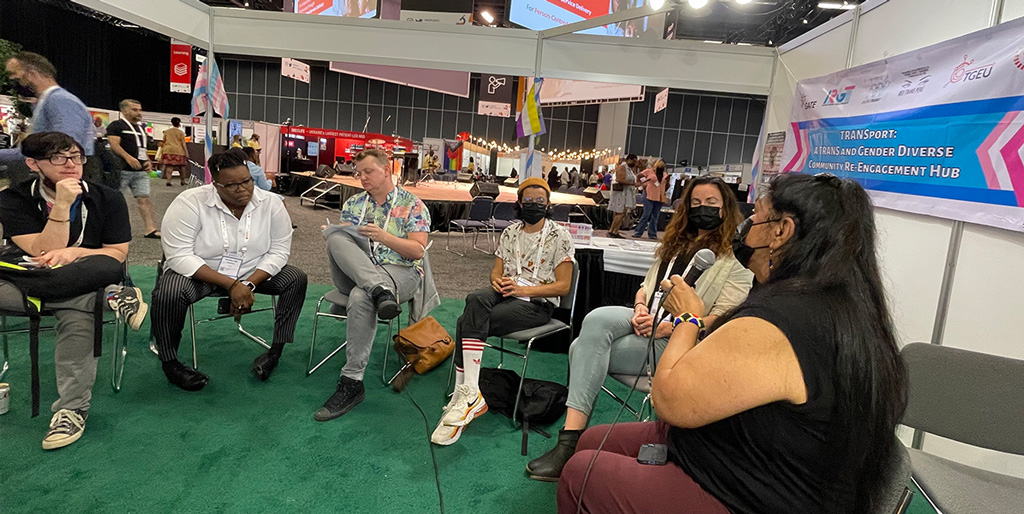Professor Sharon Lewin, President of IAS: “The purpose of AIDS2024 is to bring together science, community and leadership”. Exclusive interview for “VirusOFF”
The 25th International AIDS Conference has already begun. People from all over the world have come to Munich to understand how we can all work together to stop the HIV pandemic.
Director of the Peter Doherty Institute for Infection and Immunity, President of the IAS, infectious disease physician and scientist, Professor Sharon Lewin from Australia has worked in HIV-related clinical medicine and research for over 25 years. And she is the ideal person to answer why people should be put first. Elena Derjanschi posed this question exclusively for VirusOFF.
You can learn more about the EECA region and AIDS 2024 at aids2024.virusoff.info and our social networks.
Professor Sharon, thank you for this opportunity and let’s start our quick but important interview! I would like to focus my first question on the AIDS2024 International Conference.
What are the main differences between this conference and the previous 24 conferences?
Professor Sharon Lewin: First of all, this is the first conference in person completely after Covid. The last meeting was in Montreal in 2022, still heavily influenced by Covid. Second, this conference is being held in Munich, but it is primarily focused on Eastern Europe and Central Asia. We now have three co-chairs – myself as the international co-chair personally in Munich, Christoph Spinneras as the local co-chair, and Andriy Klepikov as the regional co-chair representing Eastern Europe and Central Asia.
This means that this year already has a strong focus on Central Asia and Eastern Europe. But the purpose of these big international conferences is to bring together science, community and leadership, because that is our experience in the HIV pandemic. It is when you bring science, policy and activism together that you have the greatest impact.
In your opinion, why does the Eastern Europe and Central Asia region need urgent measures to stop HIV epidemics?
There is a lot of concern about what is happening in this part of the world. It is one of the few parts of the world where the number of new HIV infections is increasing, and it has one of the lowest treatment coverage. We all know that antiviral treatment has a very big impact on HIV because people with HIV who are on antiviral drugs can, well, have a normal life expectancy and can no longer transmit the virus and people at risk of HIV who are on antiviral drugs can prevent infection.
If you look at treatment uptake in this part of the world (EECA – ref.VirusOff), only 50% of adults living with HIV have access to treatment, whereas globally it’s 78%. In my country, Australia, it’s 95%, so treatment uptake is very low. That is the first thing.
Secondly, if you want to prevent new infections, you need to get public health messages to people at risk, and if you criminalize behaviour like injecting drugs, sex work, or transgender-affirming care, then you cannot get public health messages to people to protect them from HIV. So it’s not just about money. It is about policy.
Globally, in 2023, the number of new HIV infections decreased by approximately 39% compared to 2010. These are the new statistics presented by UNAIDS Global. So, if we have such progress, why do we need to be concerned about our future?
Yes, these are very exciting statistics and there is certainly progress being made in reducing the number of new HIV infections. This number is a great achievement and it’s the result of tremendous leadership, community engagement and scientific advances. But that number is a global average. So when you average it like that, it doesn’t take into account the fact that in some parts of the world there are increases and in other parts of the world there are greater decreases. Now, what’s happening at the regional level, there are two regions that we’re most concerned about: Eastern Europe and Central Asia and the Middle East and North Africa, because in those two regions we are seeing increases in new HIV infections and lower uptake of antiviral treatment and prevention.

As we now talk about one of the smartest infections in the world, I can’t ask you – what about the HIV cure, can we expect that in the 21st century, we will have it finally?
Well, I’m optimistic that we will get a cure in the future. I don’t know when, but we will find a cure and that’s because of two things. We now know that a cure is possible and during the AIDS conference in 2024 we will hear about the 7th case of a person cured after a bone marrow transplant. These cases of cure tell us a lot about what’s needed to achieve a scalable cure, because a bone marrow transplant is not something we would even consider for someone with HIV. But it is scientifically possible.
The second reason I’m optimistic is that we know that some people can control HIV naturally through their immune system. This is very rare. It happens in less than 1% of people, but we’re now seeing clinical trials that are testing different approaches to stimulating someone’s immune system. About 1/3 of the people in these trials can control the virus when they stop taking antivirals. We still have a lot to learn to understand why this happens. But again, it’s a positive sign.
But I think we’re still a long way from what we ultimately want, which is a simple, cheap, scalable cure that’s available to everyone worldwide. I’m confident that we will get there because of the will of the scientists and the will of the community, and we’ve done some great things in HIV that we never thought were possible.
The challenge for a vaccine is very different. A vaccine is to prevent someone from getting infected, and that has been very difficult scientifically. But what’s going to make it even more difficult, and I still think it’s an important goal, is that we now have alternatives to a vaccine that are very effective.
And at this conference we’re going to hear about a clinical trial of lenacapavir, which is an injection treatment that can be given every six months. In a clinical trial of women in Africa who received this injection, there were no infections at all.
There were 16 infections in the group that received pre-exposure prophylaxis, out of 2000 women. So this could be an alternative to a vaccine. But a vaccine is always going to be cheaper and more scalable and therefore give you protection for longer. But these other approaches to prevention are very, very encouraging.
And the final question – why do we need to put people first?
Because we have the tools to end HIV as a public health threat. And what we need is to be able to implement these tools and to do that, we must have people at the forefront and center of all our HIV response, making sure that we deliver the right sorts of treatment, making sure that prevention strategies are accessible. And we need to do this with people.
Living with and affected by HIV, it’s a critical part of the HIV response. We’re not gonna get there without putting people first. #PutPeopleFirst
Elena Derjanschi
Photo Credit: www.doherty.edu.au, VirusOFF
Learn more about Eastern Europe and Central Asia at AIDS 2024: aids2024.virusoff.info – or on our main web page: VirusOFF.info
Follow us on social media to keep up with important updates:
Instagram – Virus off
Facebook – Virus Off




